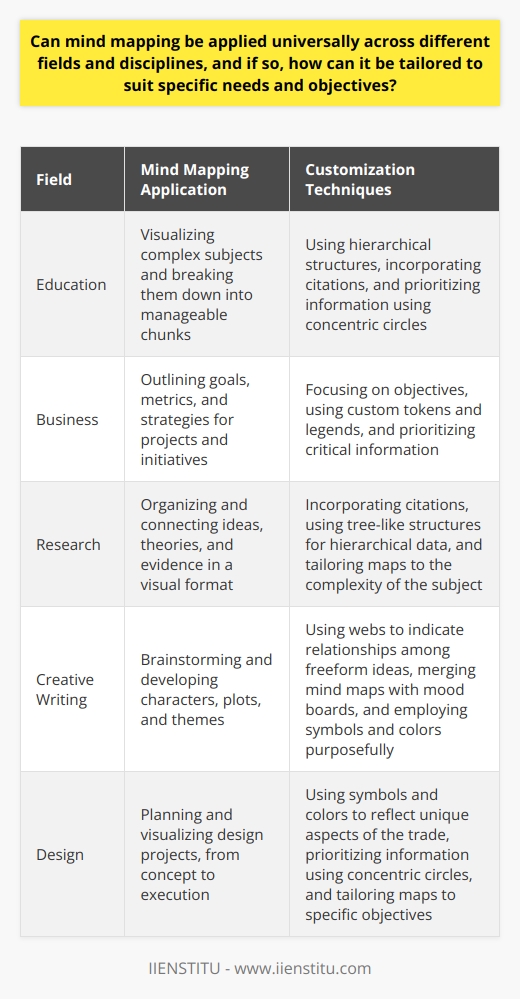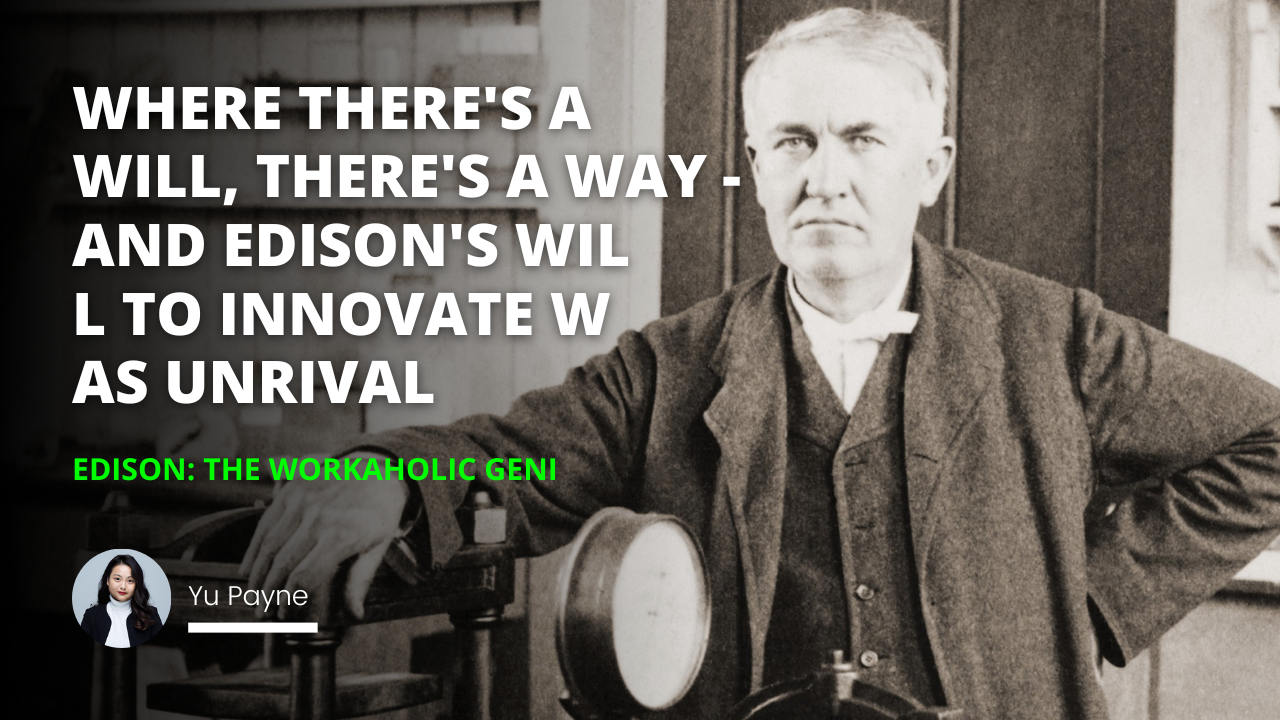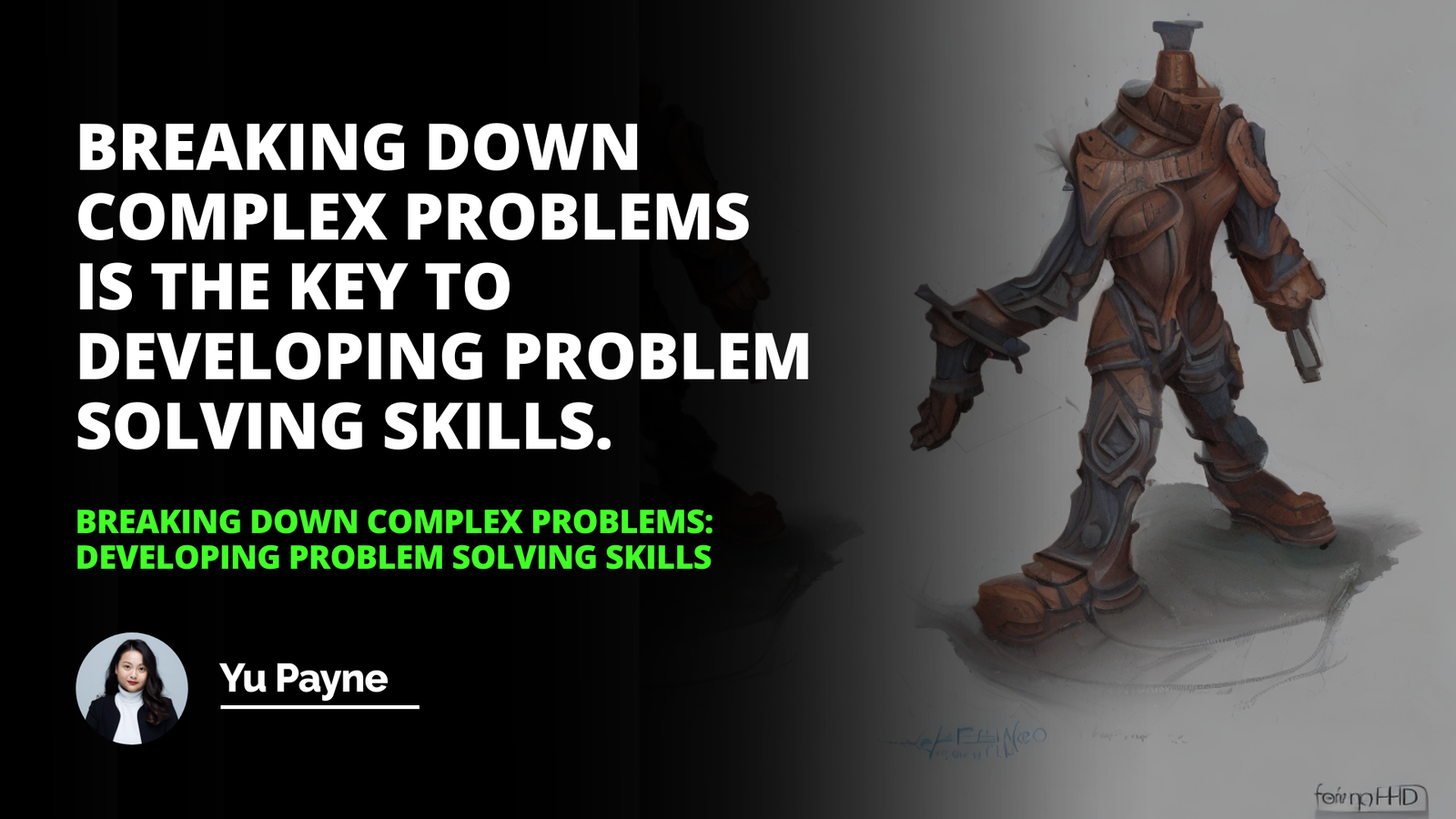
The human brain is a powerhouse of innovation, always seeking patterns and connections in a tangle of thoughts and ideas. One of the most effective methods to harness this natural propensity for organization and creativity is through mind mapping. Mind mapping is a visual thinking tool that can unlock a person's innovative potential, aiding in the development of better solutions for complex problems.
It is a dynamic and colorful method of information capturing and brainstorming, where ideas are presented visually and hierarchically. In this blog post, we embark on a journey to explore mind mapping, from its historical roots to practical applications, and how it can unleash your innovative potential.
History and Evolution of Mind Mapping
Origin and Pioneers in Mind Mapping
Mind mapping has its underpinnings in the ancient techniques of diagrammatic thinking used by educationists and philosophers such as Porphyry of Tyros and Ramon Llull. These rudimentary methods underpinning the visual representation of knowledge structures have significantly influenced modern mind mapping.
In the mid-20th century, British psychologist Tony Buzan, often credited as the father of the modern mind map, began promoting this strategy. He suggested that the mind map's structure mirrors the workings of the brain, with its radiating nodes and associative pathways resembling the neural networks of human cognition.
Progress and Adaptation of Mind Mapping Through Time
Over the years, mind mapping has evolved substantially from its beginnings. What started as a pen-and-paper technique for note-taking and brainstorming, has now been adapted into sophisticated digital tools.
The information age with its proliferation of technology has transformed the way mind maps are created, shared, and utilized across various disciplines. Today's mind mapping software not only allows for the dynamic organization of thoughts but also facilitates collaboration among teams located across different geographical locations, further expanding its utility and adoption.
Importance and Values of Mind Mapping
Enhancing Creativity and Productivity
Mind mapping is intrinsic to boosting creativity. By visually organizing thoughts, individuals find it easier to generate new ideas and make connections that may not be immediately visible with linear thinking. Productivity, too, gets a significant augmentation as mind maps provide a clear structure that streamlines planning and reduces the time spent on organizing thoughts. The ability to see the 'big picture' at a glance ensures critical components of a project are not overlooked.
Assist in Problem-Solving and Decision Making
Problem-solving skills flourish with the adoption of mind mapping techniques. Complex problems can be deconstructed into manageable parts, allowing for a systematic evaluation of potential solutions. When it comes to decision making, mind maps can outline the various consequences of different choices, helping to visualize outcomes and strategize effectively.
Use in Fostering Education and Learning
Mind maps are also gaining ground in educational contexts, where they help students assimilate and recall information through a diagram that mimics the brain's associative pathways. This visual and structured approach to learning capitalizes on the brain's predilection for images and colors, enhancing memory retention and retrieval. Mind mapping is also being incorporated into online certificate courses to facilitate remote learning.
Example of Its Role in Business Environments
In business environments, mind mapping has been embraced for its ability to strengthen collaborative efforts. Teams use mind maps to communicate ideas, ensuring that everyone has a shared understanding of project goals, timelines, and responsibilities. This collaborative nature of mind mapping helps in aligning individual efforts with organizational objectives, thereby streamlining processes and improving overall business efficiency.
The Science Behind Mind Mapping
Relationship Between Mind Mapping and Neuroscience
The effectiveness of mind mapping is grounded in its correlation with the function of the brain. Neuroscience suggests that the brain is not inclined towards linear thinking but prefers to think in multiple directions simultaneously. Mind mapping harnesses this natural inclination by allowing thoughts to branch out in various directions, emulating the brain’s relational and associative functions.
How Mind Mapping Leverages the Brain's Natural Modes of Operation
Mind maps are adept at leveraging the brain's penchant for visual stimuli and pattern recognition. They capitalize on the use of colors and imagery that the brain finds engaging, thus aiding in memory and understanding. By facilitating a non-linear manner of organizing thoughts, mind maps align closely with the cognitive processes involved in learning, recalling, and creating.
Examples of Research and Studies Supporting Mind Mapping
A myriad of research studies have lent credence to the value of mind mapping. Investigations into its impact on learning have shown that students who use mind maps for note-taking and studying often outperform those who do not. Moreover, cognitive psychologists have shown that the spatial and colorful layout of mind maps can significantly enhance the recall of information and contribute to deeper cognitive processing.
Principles and Techniques in Mind Mapping
Basic Rules to Follow When Creating a Mind Map
When embarking on creating a mind map, there are some fundamental principles to adhere to. The mind map should start with a central idea and from there, branch out into major and minor points. Hierarchical and associative thinking is vital, with each branch representing a subtopic related to the main concept. The ideas should flow in a radial fashion to mimic brain cells' connectivity.
Effective Color and Image Usage
Effective mind mapping also relies heavily on the use of colors, images, and symbols that act as mental triggers, enhancing memory and making the map more engaging. Each main branch should be color-coded to distinguish it from others, while images and symbols can be used to encapsulate ideas succinctly, often replacing long sentences. This use of graphical elements also makes the mind map more enjoyable to create and review.
Clustering and Association in Mind Mapping
Clustering and association are key components of mind mapping that enhance the understanding of complex material by breaking it down into interconnected, more digestible chunks. The map's structure allows for easy addition of new information, demonstrating the flexible nature of thought and the interrelation between different concepts.
Tools and Software for Mind Mapping
The digital age has seen a proliferation of tools and software designed specifically for mind mapping. These digital platforms allow for quick editing, easy sharing, and collaboration, furthermore, some are integrated with task management features, enabling the seamless transition from brainstorming to project planning and execution.
Practical Demonstration of Creating a Mind Map
A practical demonstration of creating a mind map begins with identifying a central topic, from which main branches are drawn to represent key themes. Additional branches subdivide these themes into further details. As the map grows, it not only reflects the complexity of the subject but also presents it in a manageable and intuitive format.
Applications of Mind Mapping
Mind Mapping in Education and Studies
In the realm of education and studies, mind mapping serves as a versatile tool. It aids in note-taking, whereby a lecture or a piece of text is condensed into a map that highlights only the essential information, consequently increasing concentration and comprehension. In revision, mind maps can be used to collate all the relevant information on a topic, making it a one-stop visual summary that aids in retention.
Mind Mapping in Project and Task Management
For project and task management, mind maps facilitate the breakdown of projects into manageable tasks and subtasks. They allow project managers and teams to visualize timelines, dependencies, and resources at a glance, fostering a comprehensive understanding of project scopes and schedules.
Mind Mapping in Brainstorming Sessions and Teamwork
In brainstorming sessions and teamwork scenarios, mind maps are a shared canvas for idea generation. They promote a collective intelligence environment where every participant's input is visualized, empowering the team to see how individual ideas contribute to the bigger picture and stimulate further creative ideation.
Mind Mapping in Personal Growth and Development
On a personal level, individuals utilize mind mapping for goal setting and life planning. The visual layout helps in outlining personal aspirations, the strategies to achieve them, and the milestones marking progress. It also aids in personal reflection, helping individuals to introspect and organize their thoughts about their life journey.
Real-life Examples of Mind Mapping Application
Numerous real-life examples attest to the impact of mind mapping across various fields. Companies such as Disney and the BBC use mind maps to organize creative brainstorming and project management. Educational institutions worldwide have embraced mind mapping as a tool to help students synthesize complex information.
Potential Challenges and Solutions in Mind Mapping
Common Errors to Avoid in Mind Mapping
One of the challenges in mind mapping stems from overcomplication, where too much information clutters the map, defeating the purpose of clarity. Overusing colors or images can also be an impediment, overwhelming the brain rather than aiding it. These common errors can be avoided by adhering to mind mapping principles and keeping the map simple, yet vibrant.
Tips to Enhance Efficacy in Mind Mapping
To enhance the efficacy of mind mapping, one must adhere to simplicity, prioritize ideas, and maintain visual balance. The use of single words or short phrases can help keep the map clear. Ensuring logical connections between branches, and revisiting and refining the mind map regularly, can improve its usefulness as a dynamic thinking tool.
Strategies to Overcoming Challenges in Mind Mapping
Overcoming the challenges of mind mapping requires practice and a willingness to experiment. It’s important to remember that a mind map is a personal tool that can be adjusted according to the user's preferences and needs. Regularly engaging in mind mapping exercises, and perhaps even enrolling in a problem-solving skills course, can significantly improve one's proficiency in this innovative technique.
Summarizing the Importance and Uses of Mind Mapping
In conclusion, mind mapping is a potent tool for unlocking human potential, aiding in generating innovative solutions and approaches to various challenges. By aligning with the brain's natural operations, mind mapping encourages holistic thinking and creativity. Its applications span from education, business, personal development, and beyond, proving its versatility and effectiveness.
Personal Opinion and Future Direction of Mind Mapping
As mind mapping continues to integrate with digital technology, its prevalence and importance in various spheres are likely to grow. By fostering a culture where visual organization and associative thinking are valued, individuals and organizations can leverage mind mapping to push the boundaries of creativity and productivity.
Frequently Asked Questions
What is the role of mind mapping in facilitating innovative thinking and better problem-solving strategies?
Mind Mapping and Innovative Thinking
Mind mapping serves as a visual brainstorming tool. It encourages non-linear connections between ideas. By representing thoughts visually, mind maps mimic the brain's associative pathways. This resemblance fosters creative insights.
Encouraging Association
Mind maps encourage associative thinking. When one creates a mind map, they link concepts organically. This process often reveals unexpected connections. Surprising links can lead to innovative solutions.
Enhancing Memory and Recall
Mind maps improve memory retention. They transform information into a visual format. Our brains process visuals quicker than text. Thus, mind maps assist in better recalling facts.
Simplifying Complex Ideas
Complex information becomes digestible with mind mapping. Simplification is key. You break down large concepts into bite-sized elements. This clarity enhances understanding. It can lead to more effective problem-solving.
Facilitating Collaboration
Mind maps are excellent collaboration tools. They allow teams to brainstorm together. Each member can see and contribute to the map. This shared vision leads to diverse ideas and a collective understanding.
Streamlining Problem-Solving
Mind mapping streamlines the problem-solving process. It allows you to identify the root cause of a problem. You map out related factors and potential impacts. This overview aids in crafting targeted strategies.
Problem-Solving Strategies Enhanced by Mind Maps
Brainstorming Solutions
Mind maps excel in brainstorming sessions. They allow for rapid idea generation. Users can add and expand on ideas freely. This flexibility leads to a wealth of potential solutions.
Prioritizing Tasks
With mind maps, one can easily prioritize tasks. The layout makes it clear what matters most. You can see the hierarchy of concepts and actions. Prioritization becomes intuitive.
Tracking Progress
Mind maps can track problem-solving progress. They can mark completed tasks and highlight pending items. Progress tracking ensures a focused approach to complex issues.
Identifying Gaps
Using mind maps can expose knowledge gaps. They reveal what one understands and what remains unclear. This self-awareness prompts further research or inquiry where needed.
Mind mapping is a tool that can unlock innovative thinking. It turns abstract thoughts into tangible visuals. It organically facilitates brainstorming, memory, and clarity. In problem-solving, it offers a structured yet flexible approach. This dual nature makes mind mapping an ally for cognitive exploration and practical strategy development. The next time you face a challenging problem, consider using a mind map to guide your thinking process.
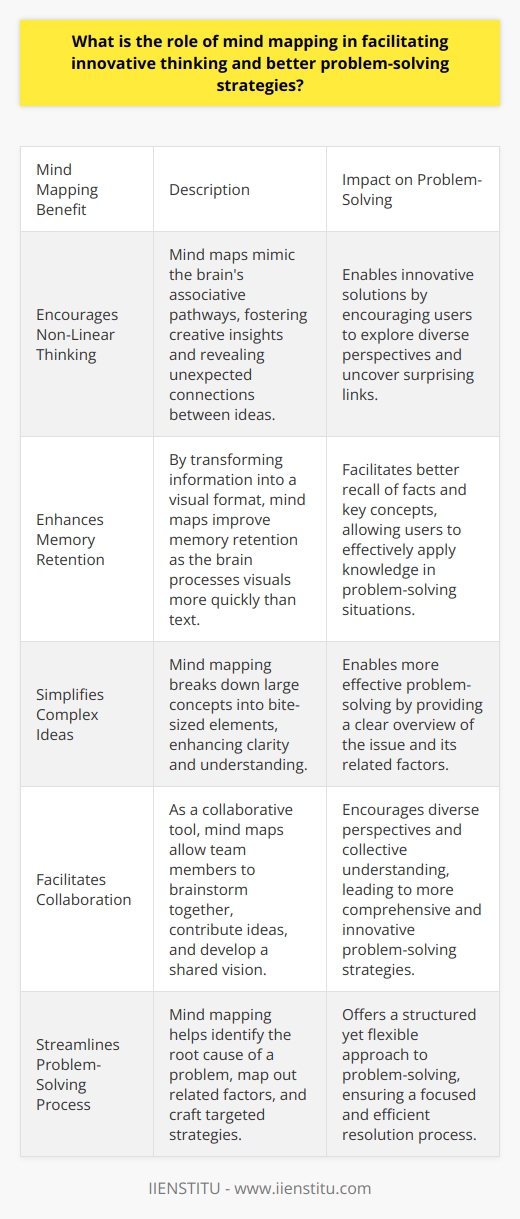
How can psychological principles be applied within a mind mapping concept to further enhance productivity and creativity?
Understanding Mind Mapping
Mind mapping is a visual tool. It aids in organizing thoughts. It boosts creativity and productivity. Users draw their ideas as a diagram. These diagrams resemble trees or spider webs. Mind maps start with a central idea. Branches extend to represent connected ideas.
Psychological Principles in Mind Mapping
Association
The brain thrives on links between ideas. Mind mapping leverages this principle. It allows for quick connections between concepts. These connections mirror how the brain naturally operates. Associations can jumpstart creativity. They make recalling information easier.
Visualization
Humans process visuals faster than text. Mind maps are inherently visual. They use colors, images, and spatial arrangements. These features engage the brain. They enhance memory and understanding. Visualization reduces cognitive load. It offers clarity amidst complex information.
Chunking
Chunking is grouping similar information together. It’s essential for memory. Mind maps use chunking. They simplify complex information. Ideas group into branches. This makes data manageable. It aids in clearer thinking.
Applying Principles to Enhance Productivity and Creativity
Set Clear Goals
Start with a specific central idea. Define what you want to achieve. This sets the direction for your mind map. It aligns your thought process. Goals guide the branching out of ideas. They maintain focus.
Encourage Exploration
Use branches to explore thoughts. Allow free-form thinking. This fosters creative associations. Don't censor ideas too early. Let them flow naturally. Exploration can uncover innovative solutions.
Build on Ideas
Each branch can lead to new insights. Add sub-branches to expand. Sub-branches offer more details. They show the relationship between ideas. Build on ideas progressively. This deepens understanding.
Integrate Colors and Images
Colors stimulate different brain areas. Images can convey complex ideas quickly. They evoke emotions and memories. Use colors and images in your map. This makes the content more engaging. It enhances recall and inspiration.
Review and Restructure
Regular review is crucial. Look over your mind map often. Check for gaps in logic. Ensure all areas align with goals. Restructuring can be beneficial. Rearrange branches for better flow. This fosters new connections. It can refine thinking.
Limit Branches
Limit the number of branches. Too many can overwhelm. They can lead to cognitive overload. Keep branches manageable. This ensures clarity of thought. It supports effective brainstorming.
Encourage Sharing and Feedback
Share mind maps with others. Seek feedback. Different perspectives can add value. They can spark new ideas. Collaboration broadens understanding. It enriches the mind mapping process.
Mind mapping meshes well with psychological principles. It taps into how our brain naturally works. Use association, visualization, and chunking. They promote mental efficiency. Mind maps should start with clear goals. They must encourage exploration. Build on ideas meaningfully. Integrate visuals for impact. Review to refine logic. Limit branches to avoid clutter. Collaborate for diverse input. These practices can catapult productivity and creativity to new heights.
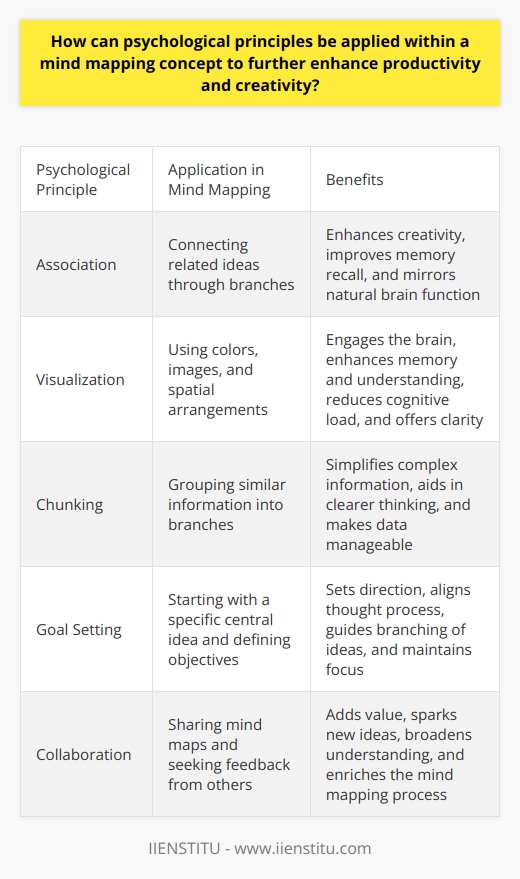
Can mind mapping be applied universally across different fields and disciplines, and if so, how can it be tailored to suit specific needs and objectives?
Mind Mapping Across Disciplines
Mind mapping transcends scholars' typical siloed approach. It is a versatile tool. Professionals adopt it in various fields. They range from education to business, research to creative writing. The central concept involves visualizing thoughts and ideas. People use it around a central subject.
Flexibility for Different Fields
Key to its universality is its adaptability. Mind maps can expand or compress. They align with the complexity of a subject. For simple concepts, maps remain straightforward. Complex subjects demand intricate mind maps. Each discipline can tailor maps to its content. Fields with hierarchical data, like biology, use tree-like structures. Creatives prefer webs, indicating relationships among freeform ideas.
Tailoring to Specific Needs
Each field adjusts the mind mapping technique. Academics may prioritize citations in their maps. Businesses focus on goals and metrics. Each sector has its custom set tokens and legends. Designers employ symbols and colors purposefully. They reflect the unique aspects of their trade. Creatives might merge mind maps with mood boards for inspiration.
Customization for Objectives
The goals of the specific discipline influence customization.
Strategic planners highlight decision pathways.
Educators outline curricula and lessons.
Medical professionals map out symptom and disease interrelations.
Anchoring objectives at the map's center streamlines the process. Concentric circles can prioritize information. Outer circles hold less critical details.
Benefits of Universality
Mind mapping's universal application encourages cross-disciplinary collaboration.
Researchers share findings more effectively.
Teams from diverse backgrounds find common visual language.
Executives strategize with a clear visual plan.
Continuous Evolution
The digital age has catalyzed the evolution of mind maps. Software offers endless customization. This flexibility allows tailoring to even more specific needs.
In conclusion, mind mapping proves universal and adaptable. Different fields and disciplines mold it to fit their unique landscapes. It provides a bridge to connect complex ideas. This serves as a powerful testament to its enduring value.
